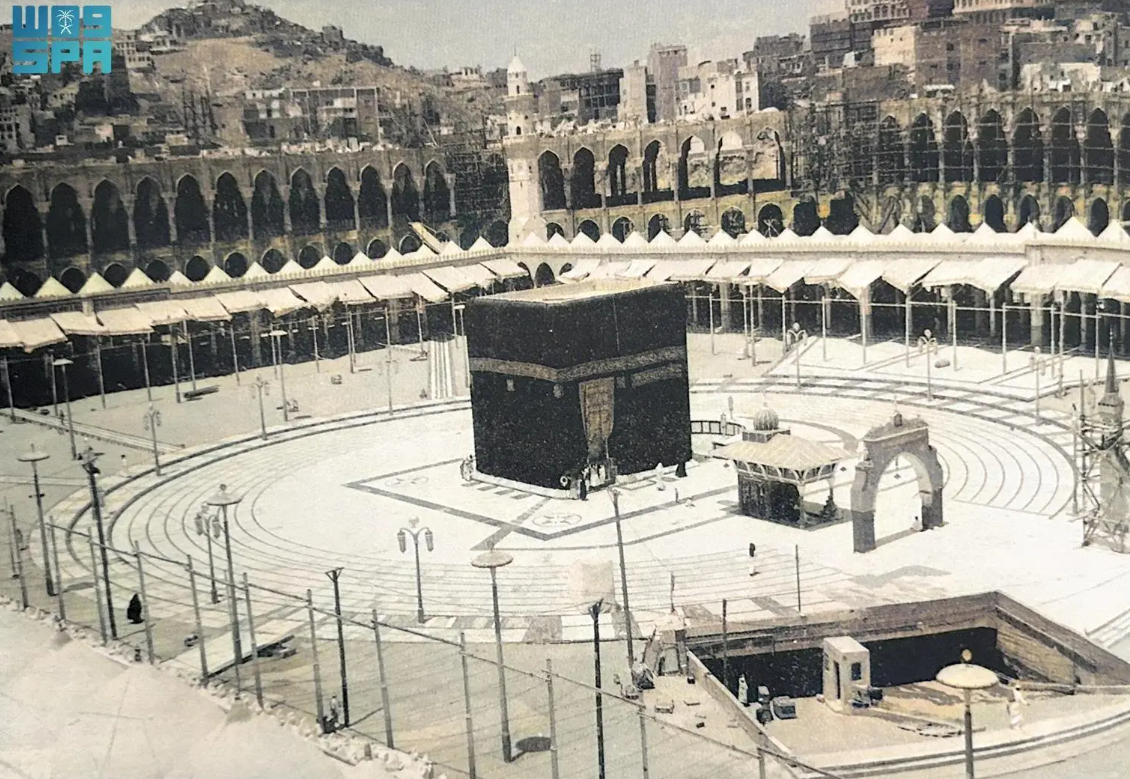
Transforming Hajj: King Abdulaziz's Early Vision for Pilgrim Comfort and Safety
The Hajj of 1927 marked a pivotal moment, as King Abdulaziz bin Abdulrahman Al Saud oversaw significant structural improvements within the Grand Mosque, including the replacement of gravel courtyards with cement tiles, a change that notably reduced heat and simplified cleaning.
These enhancements underscored King Abdulaziz's deep commitment to pilgrim comfort and safety, beginning with Makkah's annexation to the third Saudi State in 1924, years before the official unification of the Kingdom.
Umm Al-Qura newspaper, in its September 9, 1927 issue (No. 143), documented these reforms, highlighting the decision to pave approximately 1,584 architectural cubits of the Grand Mosque's courtyard with newly introduced cement tiles, chosen for their aesthetic appeal, durability, and heat-resistant properties. The plan aimed to extend this paving across the entire Grand Mosque to ensure a uniform surface.
Continuous year-round efforts prepared the holy sites with essential services to enhance pilgrim comfort. By 1928, pilgrims experienced further significant improvements, including the construction of rest canopies between Arafat and Makkah and the development of emergency services.
To enhance pilgrim health, a specialized committee was established in 1932 to monitor housing quality in Makkah. Its responsibilities included ensuring cleanliness, managing occupancy to prevent overcrowding, and regulating rental prices to keep them affordable. That same year, rest areas and small residential inns equipped with food, drink, sleeping rooms, and bathrooms were established in Makkah, Madinah, and Jeddah.
The early 1930s saw another significant development that demonstrated King Abdulaziz's meticulous attention to pilgrim comfort: the opening of the overland Hajj route between the Kingdom and Iraq in 1935. A report by the supervising committee detailed the road's condition, travel specifics, and safety precautions.
Upon King Abdulaziz's directives, stringent safety controls were established. The report specified that small car convoys be formed, with each car displaying three flags: red to indicate mechanical stops, aqua green for temporary stops for water or fuel, and yellow to signal police assistance. Drivers were briefed on the meanings of the flags, and convoys were to be led by a responsible person accompanied by an experienced guide.
The report also provided extensive information on route components, water sources, terrain descriptions, expected weather conditions, and how to manage them, ensuring a guided and secure journey for travelers.








